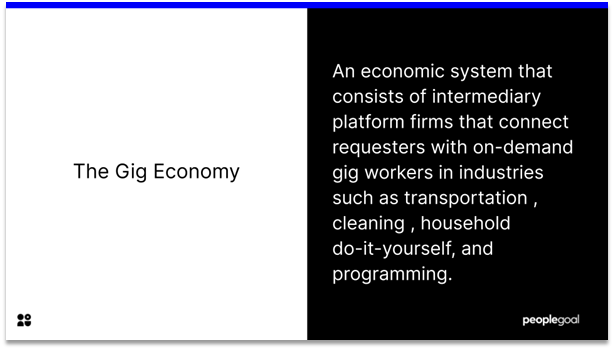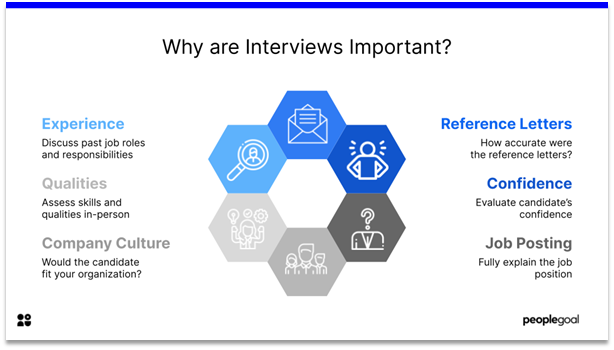Unlike formal communications such as memos or company announcements, informal communication is the spontaneous, unstructured relaying of information that takes place in a work environment. It’s often referred to as the grapevine, since it relies upon individuals passing along information amongst colleagues or groups as we see fit without a structure, timetable or vetting process for the
As it doesn’t take into account the traditional flow of information from the top of an organization downward, there’s always the possibility of misunderstanding or half-truths to be spread. And in the extreme case, gossip and unfounded rumours can be bad for morale and lead to other performance issues as well.
As social creatures, it’s unreasonable to try to suppress all informal communication – just the thought of working at an organization that would attempt that sounds quite bleak. But there are ways that we as managers, leaders, and HR professionals can demonstrate examples of informal communication that encourages conversation that is upbuilding, positive and in line with organizational objectives.
9 Positive Examples of Informal Communications

1. Over-communicate
One of the easiest ways to get ahead of rumours is to be transparent. In the workplace this is accomplished by communicating what’s going on – and then communicating some more. Establishing formal communication channels as trusted sources alleviates the need for unnecessary informal channels.
2. Encourage peer communication
Instead of stifling communication around co-workers, provide tools to discuss, find help, and offer advice. Realtime chat, message boards, and online group functionality can make it easier for some to raise questions and suggestions without having to go through drawn-out formal processes.
3. Act quickly
When disruptive informal communication is identified, it’s important to take action immediately. Gossip or rumours are often centered on what we see that’s “wrong” and the appropriate reaction is to focus on being solution-oriented and positive about what is going “right.” While we should work to improve on areas where legitimate complaints are raised, staff who repeatedly demonstrate a focus on destructive conversation should face disciplinary action.
4. Create a culture of champions
Harmful informal communication can be a symptom of overlying dysfunctional business processes. While department heads may be primarily focused on their own functional area, a culture champion is someone who exudes and reinforces company values across all areas they interact in. A real champion isn’t someone who simply enforces policies or reports criticism – instead they identify and communicate when change is needed, but also set the example for how to work in the meantime. Identifying and supporting such champions is crucial to a positive communication strategy.
5. Invite feedback
You don’t have to bring back the suggestion box to create a feedback culture. 360 degree feedback platforms that allow for direct or anonymous feedback can help facilitate a move towards gathering constructive ideas for improvement instead of toxic, secretive complaints.
6. Open the floor
If possible, consider opening up the types and sources of information you distribute. Team and department updates can be useful tools to show what we’re working on and remind everyone we’re working towards the same goal.
7. Open the door
It’s one thing to just say you have an open door policy and hope employees will come to you with issues. It’s another to actually demonstrate a truly open door policy. Creating an environment where everyone feels comfortable coming to their manager or HR with issues and concerns can stop harmful rumours before they begin.
8. Consider the tone
One area that gossip or dissent can begin to form is when formal communications comes across as arrogant or tone deaf. Since we have the opportunity to craft and tailor formal communication, it’s important to consider how the message will be received – by individuals, teams, and even outsiders. When we create an inclusivity environment, we leave less room for gossip and simple misunderstandings.
9. Use the grapevine for your benefit
While it gets a bad rep sometimes, informal communication serves a purpose – connecting people across departments and hierarchy and filling in the gaps when formal communication is too slow or ineffective. It’s less expensive and can be more direct since it isn’t targeted to a large audience all at once. You can tap into this by using managers and leaders to spread pointed and relevant information as it is needed.
There’s no need to stifle or view the grapevine as a purely negative source of information. It’s possible to take advantage of the quick transmission of information and even use criticism as an opportunity to identify areas for improvement and growth as an organization.
Ready to 3x Your Teams' Performance?
Use the best performance management software to align goals, track progress, and boost employee engagement.






